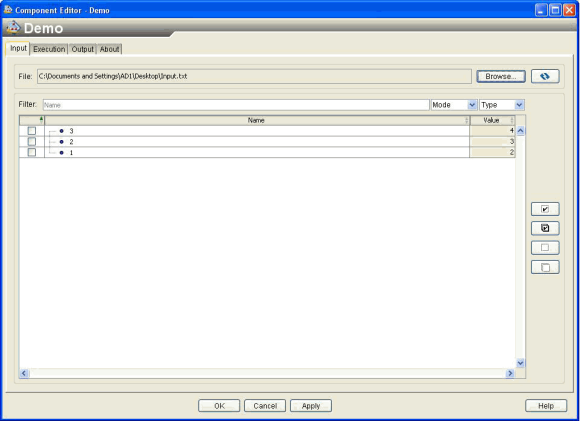Internationalizing the Command with File I/O Template | ||
| ||
ResMgr. This class contains several utility methods
to provide a consistent way of handling i18n internationalization (i18n)
by encapsulating the Class.getResource() method. The
Command with File I/O template uses the getMessage method
to internationalize strings that are displayed. The following is the
typical usage of this method:
ResMgr.getMessage(CLASS, 0, "Some message!");
You should replace 0 with a unique number for each message and you
should put all the numbers and corresponding messages in a messages.properties
file as key value pairs (e.g., 23=Some message). If
you want to localize your component to, for example, the French language
then create a messages_fr.properties file and put the
translated messages in the file with the corresponding keys (e.g., 23=<French
"Some message">. Depending on the locale of the user, Isight
automatically picks up the appropriate messages. If there is no particular
localization, the third argument of the getMessage()
method is used as the default message. The two-letter language codes
for each language used for the message file names (messages_<two
letter code>.properties) are defined by the ISO-639 standard
(refer to the java.util.Locale class).
IString. This class represents an i18n string. It
is used similarly to the ResMgr.getMessage() method.
However, it is more powerful because the IString object
can be persisted to the database in a locale-neutral, component-aware
form. You should use IString in messages that will be
written to the log (both at design time and at run time).
For more details about these APIs, refer to the Isight javadocs.The following figure shows the Command with File I/O interface:
